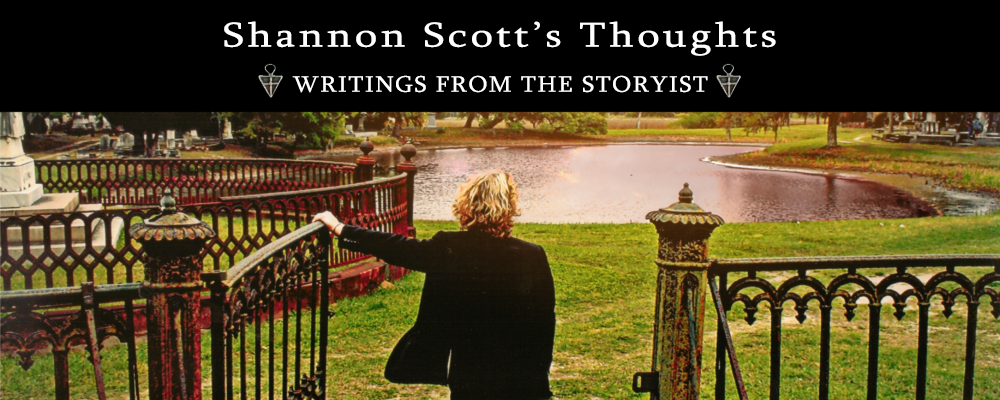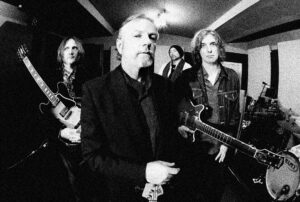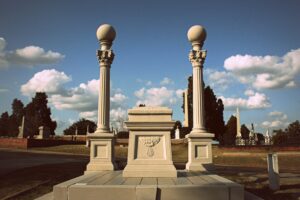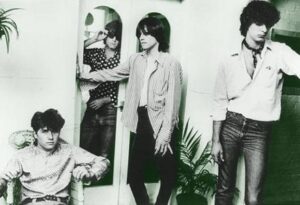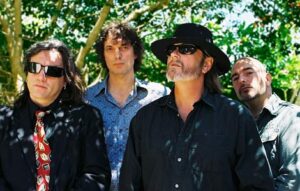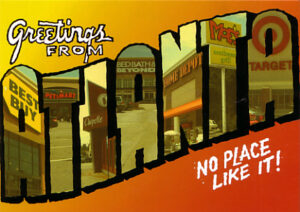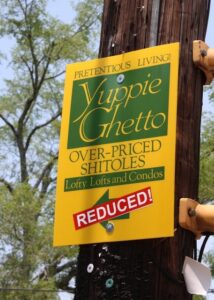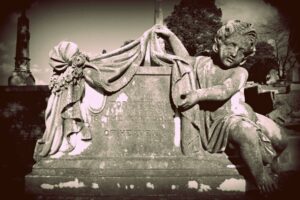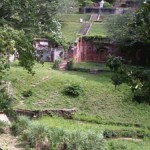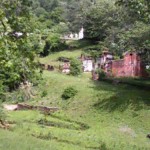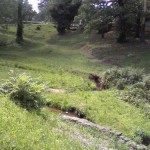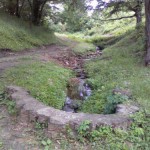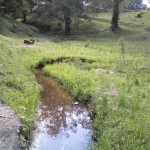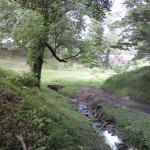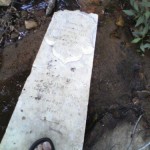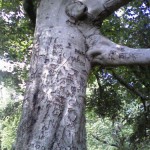By Shannon Scott (C) 2015
NOTE: Having just seen The Church in concert recently for what is probably the 4th time, I decided to scratch up this review I wrote for their 30th Anniversary Tour in 2010. I think it says something about the force that music is and also why this band is so enduring.
There’s the church, and then there’s The Church. There are cemeteries, and then there is Rose Hill. Both have been my passion and love for quite some time. I spent a little time with them both this past weekend. Saturday night in Atlanta marked the last night of the 30th Anniversary Tour for the band The Church and then Sunday marked another day in the 170th year of Rose Hill Cemetery.
The Church as some may know, are best known in the states for their 1988 hit, “Under The Milky Way Tonight,” a haunting, melancholy and cerebral love song of sorts. I remember being 17 and lying on the hood of my 1978 Trans Am inside of an Illinois cemetery surrounded by corn fields, staring at the stars with a girl I loved and the song reverberating off of headstones as it played from the car, moving around the cemetery and night air like some singing wraith. The song and the band became a part of my consciousness and lead singer, Steve Kilbey, a part of my hero base. The man feels art and makes it. He draws and paints, writes and sings, and in the same way some people eat. No lie. And unlike most rock stars who just go around spending money and doing interviews and carry around a kind of glam approach to their craft, Kilbey and crew remain humble honorees to their art.
Ah but the show. It was a nice crowd of maybe 1000 or a spread out 750. One of those places where there isn’t a bad seat in the house really. Since most reading this aren’t fans per say, I’ll spare you the whole play-by-play. But what I will share that I was reminded what tactile musicians they all were and one other significant thing. A revelation that I will say may at first sound like stating an obvious, but for me it was a kind of revelation that gave me new appreciation as a music lover and as fellow artist. That as a band, they are all telling a story with each song and that each of their contributions is a voice that they add to the story whole. And that without the setting of the band, they could not tell the same story. A story yes, but it would not be of the same scale or meaning. Anyhow, this thought prompted me to see them more as storytellers than just musicians and I began to observe and listen through the rest of the show in an unexpected way. I began to see them more as 4 primordial neolithic beings gathered around some fire and making this sound or that one as they searched for the sound that would shape the story they were trying to tell or perhaps already existed and had found them to help it be told. Some bands strike one as exacting a will, and then other bands, like The Church, are like a will exacting on them. Even so, what gets fashioned in the end, with such cool, loving and even jaded narration by their spirit guides-man, Kilbey, is something very special to behold indeed. I’m not quite sure why they officially chose the name The Church, but I’d have to say that they are love of their own unique organization. Without going to hippie with it, I mean they are a “love organization.” Even in their most dispirited or even cynical songs, they never just remain inside of that one vein and always have some note of benevolence undercurrenting the messages and all is about four good-natured fellows. Like introspective advisers that you would turn to for learning and healing, but less of titles or of an institution. What they offer you isn’t dogma in repeat but more about vibrations that will in turn do something for you that is meaningful to you and for you. The Church really are some lovely human beings mostly. Relatable magicians amongst the spirits.
Unfortunately the next day I woke up from my little dream space inside of the in-love-with-itself, City of Atlanta. Albeit in a very comfortable bed which I did not want to leave. Don’t get me wrong, because my loathing of Atlanta is much akin to those who say, “I don’t support the war but I support the troops.” I like some of the individual things there and some of the individuals themselves but like Oscar Wilde said on his death bed, “Either that wallpaper goes or I do.” So I did and apparently Atlanta is still standing doing its thing.
On my way home down I-16 from Atlanta to Savannah I couldn’t quite shake the overall loneliness of my brief time in Atlanta. I think I relate more to the homeless people stammering around or marching purposefully with their empires stacked high in grocery carts than I do the rest of the population. So I decided I needed to get grounded in one of my favorite cemeteries, Rose Hill. So after a quick stop for some coffee, I made my way around to the steep hill entrance of the 1840 cemetery. I knew right away that I was going to find a high perch overlooking the river and would soon puff away on one of my favorite cigars. After that the universe would just kick in and take effect. It was a pretty hot day but a decent breeze and big puffy clouds rolled across the sky like ghostly zeppelins in a parade. Anyway, the cemetery is a masterpiece of Italian styled terracing and reminds me that at one time Macon was truly a great city of great business, minds, statecraft and the arts. And you know what? I’m convinced that for all of our corporate commercialized surroundings & techie gadgetry, that our world is actually so much less than civilization was at one time. Rose Hill and other cemeteries are like “today’s” dirty secret in that they reveal the past in brilliant respects and show the present for all of its weaknesses.
Macon today is a fairly rough around the edges & very poor looking town. I mean sure if you’re only measure of quality is by the number of drive-thrus and gas stations that a town has, then yeah, Macon and many other cities are virtual Renaissance Romes. But if your measure is deeper and more complex than that? Say involves literature, poetry, painting, art, stone masonry, sculpting, hand-craft, philosophy, work, effort and valuing what you possess and taking care of it all to make it last? Than cemeteries like Rose Hill once again expose us for the frivolity of the times and the soul sucking of human kind’s individuality going on all around us. Or at least if you believe that the greatness of a time can be and ought to be defined in that place’s architecture, city scape or yes, its cemeteries. In fact to look at Rose Hill, one might even doubt that the place of today and the cemetery in those places have anything to do with each other. That’s how shocking in contrast places like this can seem. As one wanders through one almost in a daze asks, “where did the culture go that belonged to this?”
But civilization philosophy aside, I just wanted to get grounded by the transporting energy there. So as planned, I found my perch and eventually lit my cigar and then after some puffs decided that I might just take some pictures with my little phone camera, not knowing if it would do the place justice or not. I began to wander and would wait at times for the sun to come out to catch the very contrasty light. I wanted to share some of the scenery with everyone. While I was sitting up on this grave plot above the river that right below has some train tracks, a poem came to mind that I knew I kind of wanted to express in some kind of way. I just got a few beats of it and just put it together below. I think my inner poet sometimes takes on the voice of a Southern black woman and I accept this just fine really. I mean if that’s the voice speaking through, it’s the voice that you accept and borrow you know?
I don’t care about anything out there!
I don’t care about the pitch fever traffic or the unkindly stares!
I don’t care, I don’t care, I don’t care, Don’t care, Don’t care, Don’t care!
I’m happy right here where the dead people sleep!
Rose Hill is my pasture and I’m its happy sheep!
There are slopes to run & stone bridges to leap!
Wildflowers growing and grass beneath my feet feet feet!
Grave markers to read and new dead people I need to meet!
I don’t have time for you old world of the living!
You might be driven but you sure ain’t livin!
There’s no peace out there or rest for the wicked!
Stress is your game and your spirits are constricted!
You won’t be my misery and I won’t be your convicted!
Here in this place I’m one with me and stay uplifted!
What’s that you say? You say you laughing at me?
That’s okay because in here you’ll soon be.
Away from all of that out there where you ain’t free.
You just can’t see, can’t see, can’t see.
So you go about your business, hustle and dread.
I’ma roam round here awhile, where you think its dead.
Might even move in, I’m so partial to this stead.
Lie down awhile, take in the cool earth ‘neath my head.
Listen to the river roll by and the train on the tracks too.
I’m home in here with the breeze and the quiet.
Not out there with you in that life laugh riot.
Some of the photos need a little explaining. Probably the most interesting and quite possibly, one-of-a-kind, burial aspect to the cemetery is this man-made but very nature grown in, “valley” between what I’ll call the two main sections of the terraced cemetery. Which is where I spent the bulk of my time taking photos so when you see the shots of the stream, this is running through that area. There are graves here that were constructed to be resemblance of the purported Christ tomb of the bible and in fact a few of them have large rocks in front of their doorways that are the spitting image. There is one shot where you see a small enclosure in the hill which has some bricks around it and it looks like an open mouth. This is one that either fell apart or was dismantled by the family or vandalized, etc. I’ve actually crawled into before in past visits and there were 4-5 bed like graves going back that used to hold the caskets or what have you and one of the neat things about being in there is that the tree roots from the e hill above are growing out of the ceiling so are kind of dangling in the air here and there and it’s really quite strange. It’s a little damp and slimy in there and you can tell kids hang out in it from time to time so there’s a bit of an uneasy feeling about what might crawl over you or who you might bump into but with a little cleaning up it would make a fine little vagabond abode.
In the end, my visit really did achieve the hopeful effect. I won’t lie, I’m rarely happier then when I’m in a cemetery. I feel more connected and abundant with thought and feeling and some part of wholeness kicks in for me that I can’t quite get anywhere else. While in Rose Hill, it took mere seconds, for me to feel “at home” and happy and at ease and at peace. But if I think about it further, certain historic cemeteries are full of everything I love in life – scupltures, wrought & cast iron, flowers, birds, trees, fresh air, history, symbols, and all of those things combined into different compositions at every turn and so many different ways to spend your time looking at them and revisiting them. For someone like me who can be easily pleased (or disturbed) by my esthetic surroundings, the right cemetery can be the definition of absolute beauty to the senses. Its uplifting and peace instilling all at once. There’s also some unconscious knowing built-in to those feelings that one day I to will be a part of one permanently and may my resting place be just as affecting as is Rose Hill, which on this Sunday, for a time, was my church.
